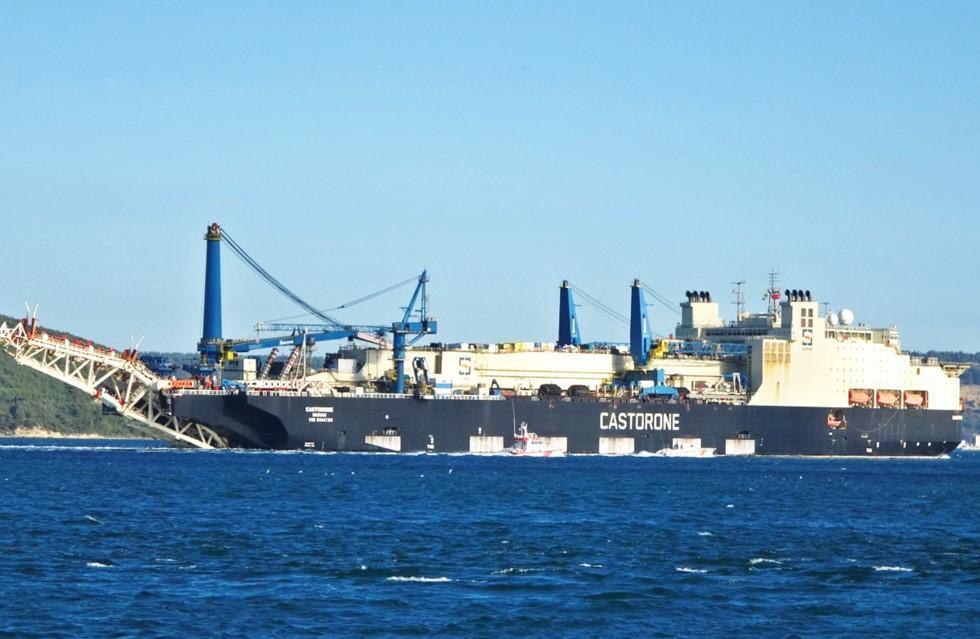
Work for deep-sea pipelaying to transfer the natural gas found in the Black Sea has begun, Energy and Natural Resources Minister Fatih Dönmez has said.
“Pipelaying in shallow waters is complete. Works at the energy base 2,500 meters deep in the Black Sea are continuing 24/7,” Dönmez tweeted on July 11, with a photo of the Castorone ship, which lays the pipes.
About 325 meters long, 35 meters wide and weighing 56,529 tons, Castorone anchored off Filyos on July 6.
The 12-meter-long pipes are first loaded onto smaller ships and then onto Castorone, which conducts its work some 500 meters offshore.
The giant vessel is expected to complete deep-sea pipelaying work by the fall.
Some six to 10 wells will be connected to Sakarya Gas Field’s offshore underwater natural gas production facility.
Those wells will produce and pump 10 million cubic meters of natural gas per day to the country’s network in 2023. This corresponds to 3.5 billion to 4 billion cubic meters of gas annually. Natural gas production is expected to increase gradually to 40 million cubic meters per day and around 15 billion cubic meters in 2027-2028.
The construction of the underwater pipeline to tap a Black Sea natural gas field that the government hopes will help wean the country off its dependence on energy imports was launched in June.
The Sakarya gas field, 170 kilometers out to sea, was discovered in August 2020.
Last year 45 percent of the gas used in Türkiye came from Russia and the rest from Iran and Azerbaijan.
The country’s annual gas consumption rose from 48 billion cubic meters in 2020 to 60 billion in 2021 and is expected to reach 62-63 billion this year, according to official figures.